'Dharmendra, Shashi Kapoor and I were inseparable while we struggled together.'
'When a disillusioned Dharmendra was packing his bags to return home, I prevailed upon him to give himself two months. Five days later, he was signed for Shola Aur Shabnam and I signed Picnic.'

Manoj Kumar's passion for films was evident in his famous repertoire as well as in his interactions.
An intelligent, literate man (he could cite literary works like Kamayani in the midst of a conversation), Manoj Kumar was also humble and easy-going.
Excerpts from the many interviews the actor did with the then Movie magazine Editor Dinesh Raheja through the years, where he says, "My films dwelt on idealism and siddhants. You can't talk about patriotism in one moment and jump into bed with a woman in the second."
As a child of the Partition of India, how did you develop this patriotic zeal which informs most of your famous films?
I was born on July 24, 1937 in Abbotabad, a military cantonment founded by Sir Abbot in the North West Frontier Province, now in Pakistan. We lived in Lahore but just before Indian independence from the British on August 15, 1947, we come to Delhi by train.
We stayed in a refugee camp in a single-room barrack. My mother was very sick and in hospital, my baby brother died.
On Independence Day, my father woke me up early and I saw Pandit Nehru hoisting our flag at the Red Fort.
My father, who had been crying in desolation at his many personal tragedies, clapped along with the huge crowd and shouted 'Jai Hind'. The fact that my grief-stricken father could still be enthusiastic about our country's freedom made me realise its importance.
As a 10 year old, the Red Fort had another significance for me. Since Partition had uprooted me from my house at such a tender age, I yearned for the streets of Lahore.
The name evoked memories of a patriotic song we children used to sing in Lahore: 'Lal Qile Se Aayee Awaaz, Saigal, Dhillon, Shah Nawaz'.

How did you make a move from Delhi to Bombay and the world of films?
I was only 19 when I came to Bombay to become a hero in films. It was on October 11, 1956, that I took the Dehradun Express which took two long days to reach Bombay but it was the train with the cheapest fare.
Within a month, my cousin Lekhraj Bhakri, a filmmaker, conducted my first screen test, which was at Prakash studios. I still have the reels of that screen test.
I began my career as a junior artiste. I played an old man in the Pradeep Kumar-Mala Sinha film, Fashion (1957).
The first song picturised on me was sung and composed by Hemant Kumar. The words were Maati Ko Lajaana Na Yeh Desh Hai Mahaan. I guess from the onset, I was fated to have a relationship with Mother Earth.
You had to struggle hard for half-a-decade to make a name for yourself. What were those days like?
I stayed with my chacha in a poky little room at Shivaji Park (central Mumbai). One day, I overcame my timidity and asked Lekhraj if he was considering giving me a break. He replied, 'Tumhare toh joote ka ek sole nahin ghisa ab tak, yahan toh logon ke pair ghis jaate hain.'
Dharmendra, Shashi Kapoor and I were inseparable while we struggled together.
When a disillusioned Dharmendra was packing his bags to return home, I prevailed upon him to give himself two months. Five days later, he was signed for Shola Aur Shabnam and I signed Picnic.
For these films, we were promised a salary of Rs 350 per month and a first class train pass. Dharmendra and I celebrated by taking a train ride from Churchgate to Borivali for four days in a row!
Rajendra Kumar was like an elder brother. He would take me home for dinner and even trust me with his tijori keys.
I came to films with the intention of earning three lakhs, to be distributed equally between my parents, siblings and myself.
I was focused on the thought of making money and convincing my parents to let me marry a non-Brahmin girl, Shashi.
Eventually, I married Shashi a month before the release of Hariyali Aur Rasta (1962) which was my first big hit.

Did your wife contribute to your creative pursuits, if at all?
She gave me the idea for Purab Aur Paschim (1970). A harsh critic, she rarely praises my work. I am grateful to her for that.
Jin filmmakers ki biwiyan unke kaam ki tareef karti hain, unki pictures ki taarif log nahin karte hain.
She is also knowledgeable about films. During our three-and-a-half-months-long courtship, my wife and I saw 109 films together!
Despite your romantic views and many initial romantic films like Woh Kaun Thi, your cinema has rarely depicted any intimacy between your alter ego, Bharat, and his women.
Even after a marriage, the honeymoon takes place in the privacy of a suite, doesn't it?
My films dwelt on idealism and siddhants.
You can't talk about patriotism in one moment and jump into bed with a woman in the second.

Which are the most beautiful screen images of women in your opinion?
From the films I directed, I really like a shot of a half-lit Asha Parekh in Upkar.
Nanda looked ethereal in the Ek Pyar Ka Nagma Hai number in Shor.
Meena Kumari's close-up in Dil Apna Aur Preet Parayi, Bina Rai in Kali Ghata and Anarkali's O Aasmanwale number and Vyjayanthimala in Nagin.
Sadhana in Mere Mehboob and as the dulhan in Woh Kaun Thi.
How do you look back on your rich career?
Right from my first directorial venture, Upkar (1967), I have made films with conviction and planned them on a grand scale.
I am told that three films made under my banner are perennially popular: Roti Kapda Aur Makaan (1974), Purab Aur Paschim (1970) and Kranti (1981).
The theme of these films is relevant today.
Kranti's claim to fame is its grand scale, music, story and performances. More than 10,000 people were involved in making the film. It would take four months to build the sets of the fort.
We shot a strenuous schedule for the film aboard a ship too.
Most of the cast and technicians became seasick. I am not fond of flying but on board the ship, I remained as fit as a veteran sailor.
When people asked me my secret, I would just smile and say, 'Homeopathy'.
I had to mortgage my house for Kranti. Fortunately, it ran for 50 weeks at Apsara cinema, Mumbai.
After seeing the film Raj (Kapoor) saab remarked, 'This is our answer to Hollywood.'
(Akira) Kurosawa, who heard about the film, sent me a fountain pen and a letter of appreciation.

Do you sit with your son Kunal and watch contemporary films?
Yes, why not? I was very bashful once.
My father would take me every Saturday evening to a restaurant in Connaught Place, Delhi, that held cabarets.
He realised that I was extremely shy because I would run away from home even if relatives came over. This was probably his chosen way of helping me overcome my inhibitions.
What is your life like after retirement?
My sons, Vishal and Kunal, treat me well.
I am equally fond of my grandson Vansh and my granddaughter Muskaan -- the first girl born in my house after 42 years.


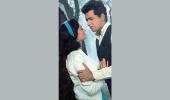
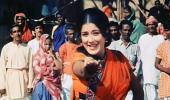

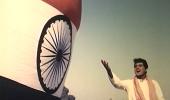

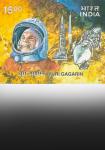

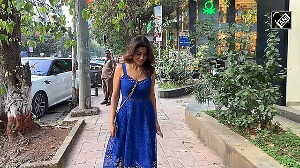
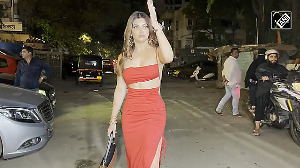

 © 2025
© 2025